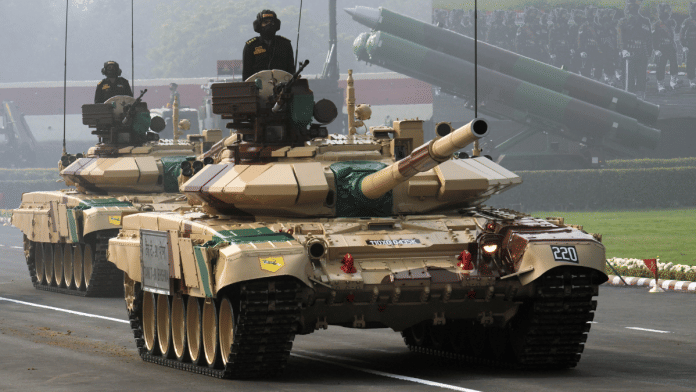New Delhi: Moving towards greater indigenous acquisitions, the Indian Army for last two financial years, 2022-23 and 2023-24, inked all its contracts under capital procurements, including those under emergency category, with local companies.
The Acceptance of Necessity (AoN) was granted to 83 percent of Indian companies and 17 percent of foreign vendors in 2023-24. It is unclear whether contracts with foreign vendors that received AoN were either signed at all or directed to Indian companies.
No AoN was granted to foreign companies in the financial year 2022-23.
The AoN is the first step towards the procurement process. Once the government gives an AoN, it gives its ascent to the armed forces for procurement of defence equipment.
Five years back, the scenario was completely different. In the financial year 2019-20, 57 percent of the Army contracts went to Indian companies and the remaining 43 percent to foreign vendors.
The very next year, the share of contracts with Indian firms rose to 73 percent while foreign companies accounted for 27 percent. This number remained the same in 2021-2022.
Sources in the defence establishment told ThePrint said that for increased capability development, the Army is looking at indigenising sustenance of weapon systems which includes spares and ammunition. “Today, we already have these components indigenised, however, there still is some amount of foreign dependence for these items,” one of the sources said.
Even as the focus is on procuring indigenous items in this area, there are two categories of exceptions. These include ammunition for legacy weapon systems with limited years of residual service left and will likely be deemed obsolete soon. Zsu-23-4 Shilka guns and the Bofors L70 fall in this category.
The other category includes weapon systems which have a high cost but low demand. Smerch rockets, for instance, are being procured from Russia.
The sources told ThePrint that the Army would now also concentrate on making sustenance, including spares and ammunition, completely indigenous. Sustenance of weapon systems falls under revenue procurements.
The shift in procurement comes after the government introduced several negative import lists in 2020, which was later renamed as the ‘positive indigenisation list’.
Introduced last year, the fifth such list estimated the total cost of indigenisation to be Rs 1.4 lakh crore and included equipment such as the futuristic infantry combat vehicles (FICVs), all-terrain vehicles, remotely piloted airborne vehicles as well as tactical drones.
In addition, to increase procurements from indigenous industry and lower dependence on foreign vendors, the Ministry of Defence had mandated the services to procure 50 percent of contracts in the first three tranches from the domestic industry. In the fourth tranche, the ceiling was raised to at least 75 percent.
While the Army remains import dependent for different parts of various systems, the procurement is done by the companies assembling or manufacturing defence items. For instance, the Zorawar light tanks will be equipped with Cummins engines, procured from the US.
In several cases, while the equipment is developed abroad, the manufacturing is done locally through transfer of technology, as in the case of the Russian origin T90 tanks that are manufactured by Heavy Vehicles Factory (HVF) in Chennai.
Among the items that the Army signed contracts for during 2023-2024 are telescopic sight for assault rifles, border security systems, remotely piloted aerial vehicles, AI-based satellite image analysis, T-72 driving simulator, night sight for assault rifles, ALH Mk-III, and BMP-II upgradation.
Under emergency procurements, it signed contracts for ballistic helmets with SMPP Ltd, Combat Weapon Training Simulator with Zentech Pvt Ltd, Quick Reaction Force vehicle with Bharat Forge, Light Strike Vehicle with Force Motors, Remotely Piloted Aerial Vehicle with Aeroarc Pvt Ltd, Hand Held Thermal Imager (HHTI) with TASL, loitering munitions, vehicle mounted infantry mortar systems with Mahindra Defence Systems Ltd and fourth generation ATGM launcher from KRAS.
(Edited by Tony Rai)
Also Read: With defence push, India looks to capture markets in Africa beyond western Indian Ocean







Never happened under UPA.
Now wonder if – in the midst of power politics – such good steps would be paused or worse – reversed!